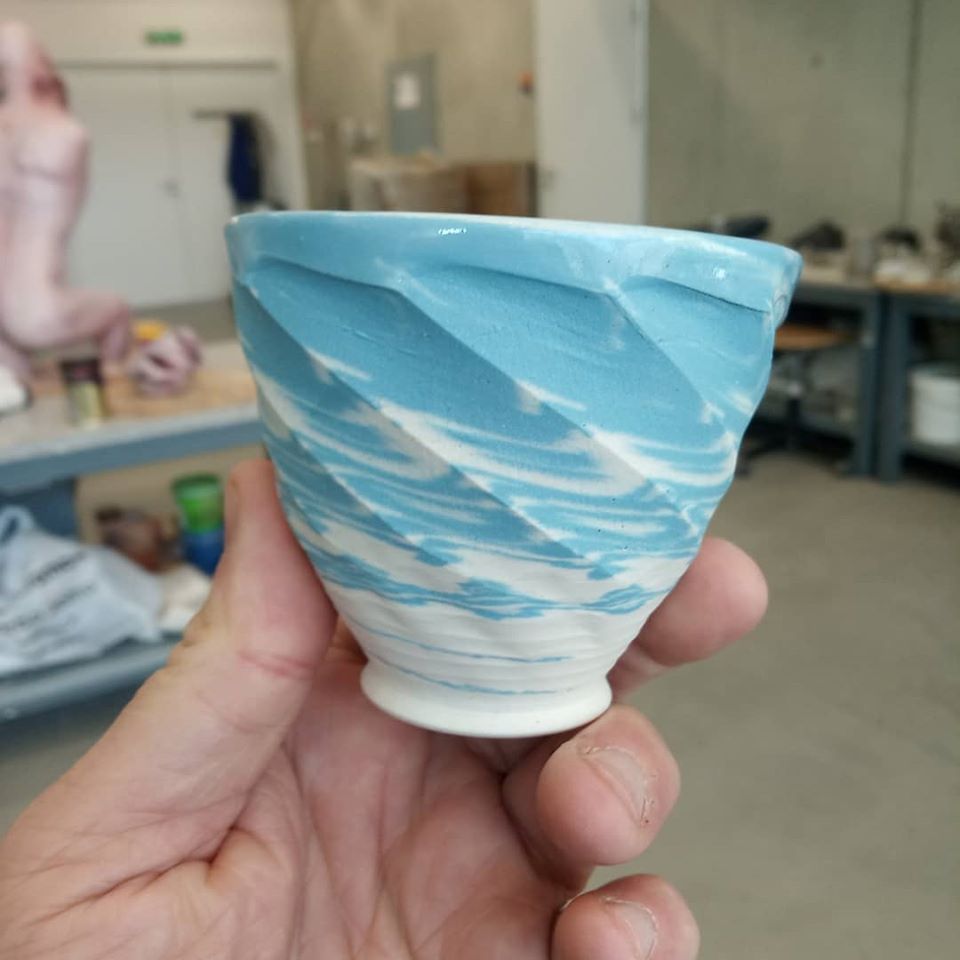

Agateware – images courtesy of Andrew Tarrant
Using colored clay to make pieces like the ones above can also be called nerokomi or neriage. Information about it can be found here: https://en.wikipedia.org/wiki/Nerikomi
Colored clay is often made by adding colored metallic oxides or stains to a white clay body. Porcelain is a white clay body. There are also some white stone-wares that can be used to make colored clay. Mason stains are more likely to give you a stable and intensive color when using them as colorants than plain metallic oxides will. This is because they have been fired and ground down, which adds the clay body to the stain, and makes it easier to get more color at a lower temperature. The lower temperature is because of something called frit in the clay body. Frit is any substance that helps bring down the natural melting temperature of a clay body or glaze.
This is a video that Lesley Milne made about making colored clay (The wedging that she talks about is pushing the clay around to work in the colored stain, which is similar to kneading dough. Wedging also has the advantage of working air bubbles out of the clay, because during the firing process air bubbles can hold moisture and turn into steam that explodes in your pottery, damaging it and maybe other people’s pottery too.):
This video shows some agateware techniques done with the porcelain, colored clay by Ceramic Jim. This is also a good demonstration of trimming techniques. It is good to throw your bottom with enough thickness at the bottom to have room to trim a nice foot onto your pot, which you can do after the pot has been allowed to dry enough from the throwing process, which takes a lot of water.
There is a small bit of information in the menu of recent blog posts to the right, under the title, ‘My Favorite Clay Body’, or you can go to the ‘Home’ page above and find the same blog there.
The rolled up colored clay can also be made into more complex patterns. This is especially easy to do well if you use polymer clay instead of potter’s clay, which may be easier to get into as a type of craft, because polymer clay can be baked in a regular oven at home. If you look under ‘Ceramics’ on the menu above, you can find more information on ‘Polymer Clay.’